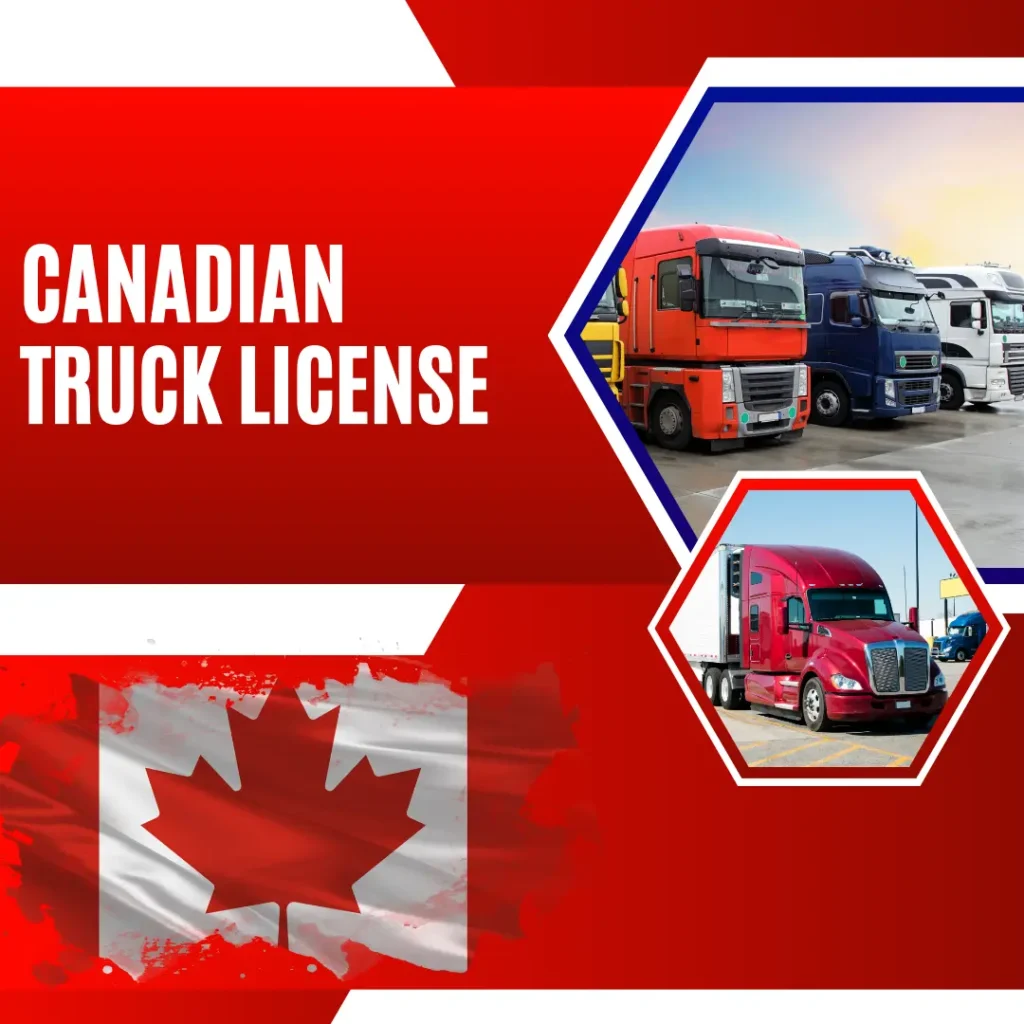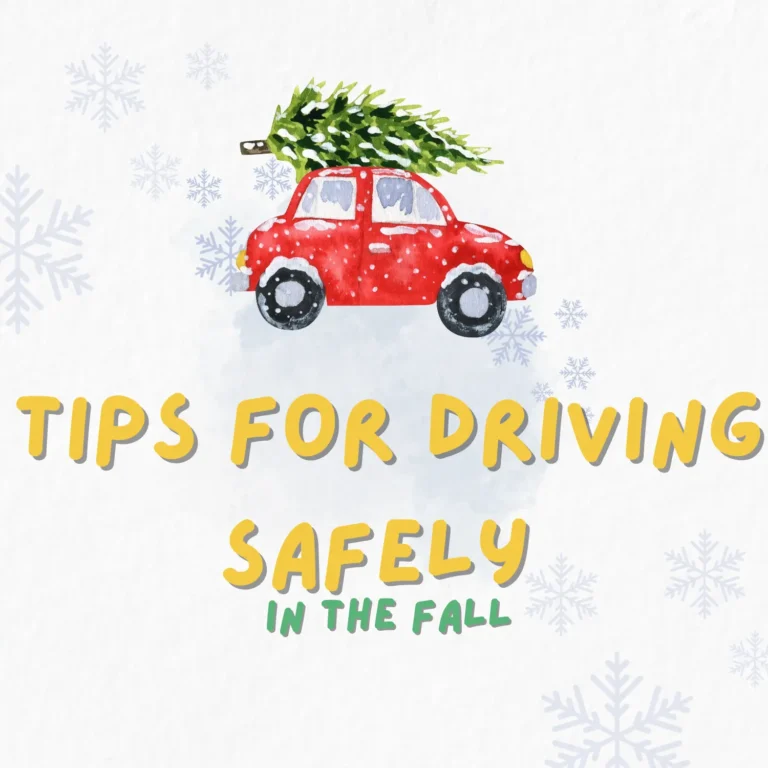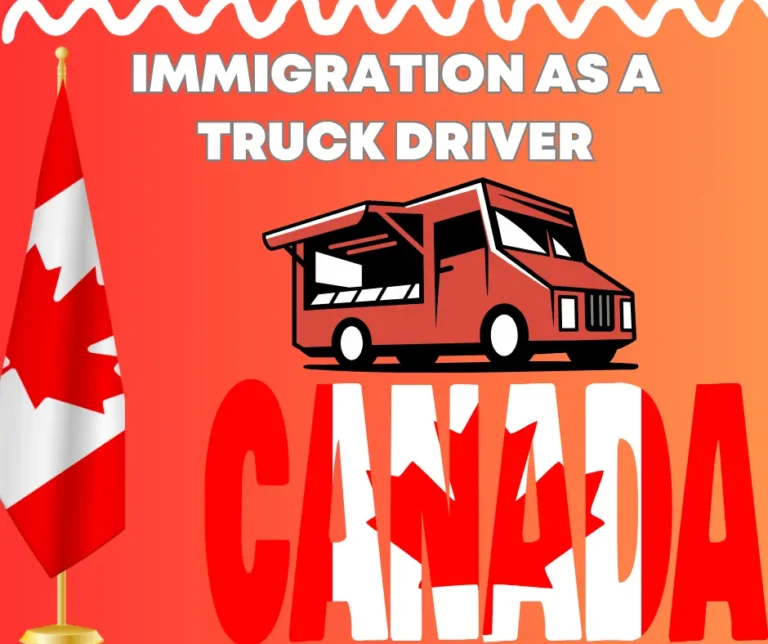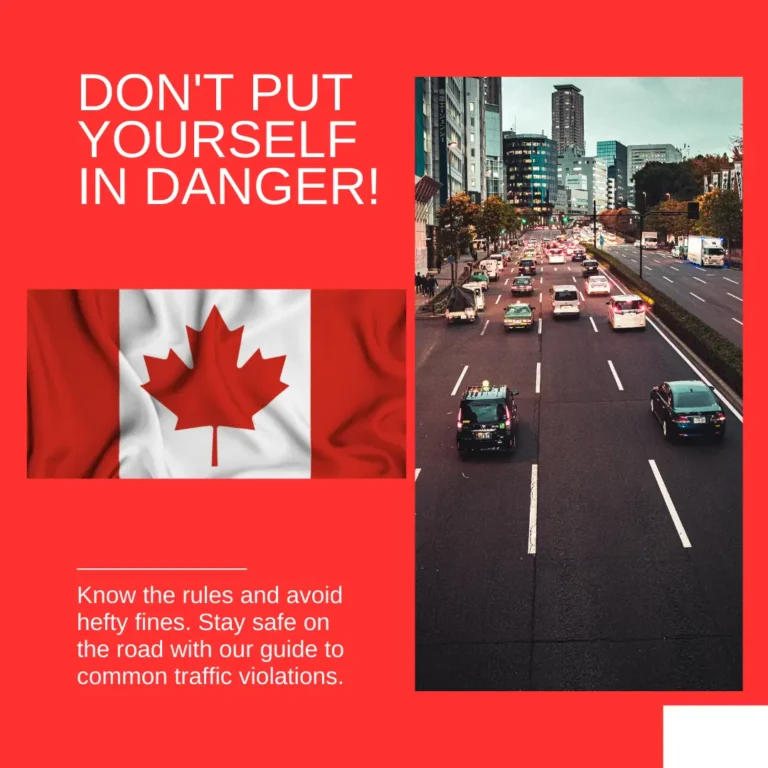How do I get a Canadian truck license?
Learn how to obtain a commercial Canadian truck license in Ontario so that you can operate a truck. Find out about the air-brake endorsement program.
Class A Canadian Truck License
Only the full Class A Canadian truck license covers air brakes on both trailers and tractors. Before taking the class A driving test, you must complete entry-level mandatory training
You can drive
If you need to drive a truck with a full Class A Canadian truck license (with air brake endorsement), then read out the below points
- A person should not be less than 18 years old.
- Take on a valid Ontario license rather than G1, M, G2, or M2
- Pass a vision exam
- Please submit your valid medical reports
- Pass a test based on details about driving large trucks, tractor-trailers and other heavy vehicles
- Complete a mandatory training course
- Pass a Road Test with a car that has a fully Class A Canadian truck license.
Your vehicle must meet the following requirements to pass your road test:
A manual transmission with at least eight forward gears and a range of high to low. Re-schedule the road test (and you will have to pay a fee). Take your test knowing that you’ll receive either a limited Class A license(condition R) OR a class A manual transmission limitation and not a Class A full license
Rules and regulations for Canadian truck license
Must meet eligibility requirements:
You must be a specific age.
Valid regular driving license.
Clean driving history.
How to apply for a Commercial Learner’s Permit:
You can contact the licensing or transport department of your local domain or region. Documentation, such as identification proof and nationality, is obligatory. You must pass a Canadian truck license test with written knowledge of commercial driving rules and procedures. To apply for a Commercial Learner’s Permit in Canada, truckers should ensure that they are qualified. This comprises of being 18 years or older. Get a copy and read through the Commercial Driver’s License Manual (CDL). You’ll be required to present documents such as your driver’s license and proof of residency at the licensing office. After passing the CDL written test, you will need to pay the required fees. After finishing these steps, you will receive your CLP. This will help you drive a commercial vehicle with certain restrictions. You must adhere to all additional procedures or requirements set forth by your provincial or territorial licensing offices.

Successfully pass the Practical Skill Test for Canadian truck license
After completing the training requirements, you will need to take a test on practical skills. This test includes an inspection of the vehicle before the trip, basic control, and driving on the roads. To pass the truck driver practical test, you must demonstrate a set of essential skills and knowledge for the safe and efficient operation of commercial vehicles. It is important to first practice a lot, perfecting various maneuvers like turning, backing, parking, and navigating different road conditions. It is important to be familiar with your specific commercial vehicles, such as a tractor-trailer or other configuration. The practical test will focus on the ability of the driver to perform a pre-trip check, which ensures that the vehicle’s working conditions are correct.
It is also important to be able to deal with real-world situations, like interacting with and adapting to traffic changes or interacting with other road users. To pass the practical exam and begin a career as a professional truck driver, confidence combined with safety is essential. Regular feedback during training from mentors or instructors can help improve a candidate’s preparation for the practical exam.
Get the Commercial Driver’s License:
You can then apply for a commercial license after completing all the required steps. It is important to note that the process for obtaining a commercial driver’s license varies slightly among jurisdictions. The first step in obtaining a commercial driver’s license is to ensure eligibility. This includes meeting the age requirement (often between 18 and 19) as well as having a regular driving license. The next step is to prepare for the knowledge test by studying the Commercial Driver’s License Manual for your province or territory. After passing the written test, candidates may receive a Commercial Learner’s Permit. This allows them to drive a commercial vehicle with certain restrictions. The skills required for truck driving are best developed through practical training. This is often done in trucking schools or through on-the-job training. The candidate must then schedule and take a road exam to demonstrate their safety when operating a commercial vehicle. The CDL is issued upon successful completion of a road test and any endorsements required for special driving, such as hauling dangerous materials. For a CDL to be acquired successfully, it is important to adhere to safety rules, commit to continual learning, and know the specific requirements of your jurisdiction.
Additional requirements (various depending on region or territory):
You should confirm the data with your local licensing authority in a quick step. Depending on which province or territory they are operating in, truck drivers must follow a variety of regulations and requirements. Each jurisdiction can have different rules for licensing, training and operating commercial vehicles. In general, those who want to be truck drivers need to obtain a CDL (commercial driver’s licence), which requires passing both written exams and practical tests.
Provinces and territories can impose requirements in addition to the CDL. Some regions, for example, may require that drivers complete specialized programs, such as those focusing on the handling of hazardous materials or the transportation of passengers. To manage fatigue and improve road safety, some provinces and territories have their own regulations regarding work hours, rest periods, and logbook documentation. It is important to be familiar with the local laws and regulations, since they can affect truck weights, routes and other operational issues.
Certain provinces and territories may also enforce environmental standards, such as idling time restrictions or emission standards. Truck drivers must comply with environmental regulations to avoid penalties and to contribute to sustainable practices.
Some jurisdictions may also require drivers to undergo periodic training or refresher courses in order to stay abreast of changes in technology and regulations. Truck drivers in Canada are faced with a complicated web of regulations, which vary by province and territory. It is important to stay abreast of all these requirements in order to ensure compliance, promote safety and contribute to the efficient and legal operation of the commercial transportation industry.
Keep your license
Your commercial license should be renewed now and then, as it is important to follow any applicable protocols.
Training:
You can enroll in an accredited trucking school, or you may be able to receive your training from a company’s program. Truck driver training is a broad process that aims to provide individuals with all the necessary knowledge, skills and experience for operating commercial vehicles safely. Most aspiring drivers attend truck driving schools, where they receive classroom training and practical experience.
Medical Exam
To ensure you’re physically fit for commercial driving, it is important to undergo a physical examination. . Medical examinations are an important part of truck drivers’ training. They ensure that they follow all safety rules when operating commercial vehicles. Truck drivers in Canada are required by law to undergo regular medical examinations to ensure their overall fitness for the demanding job. These exams are performed by certified medical professionals. The tests include hearing, vision and cardio-vascular fitness. When driving a commercial vehicle, it is vital to check if the driver has any medical issues or impairments that could affect their safety. The medical standards may vary from jurisdiction to jurisdiction but are necessary for renewing or getting a commercial driver’s license.
Endorsements:
You may require additional endorsements depending on the type of truck and cargo you intend to transport. An air brake endorsement, for example, is needed for air-braked vehicles. In trucking, endorsements are additional certificates that extend a driver’s abilities beyond what is required for obtaining a basic Commercial Driver’s License (CDL). The endorsements enable drivers to operate certain types of trucks or transport specific cargo. The Menacing Materials endorsement permits drivers to pull dangerous material. Tanker endorsement is required by those who transport liquids or gases. Double/Triple Trailers endorsements allow drivers to drive multiple trailers at once. Some endorsements include those for transporting passengers. Others may be the school bus endorsement for drivers of school buses and the air brake endorsement for vehicles with air brakes. The endorsements are earned by passing written tests and, in some cases, practical exams that demonstrate a driver’s competency in dealing with specific cargo or situations. The endorsements enhance the skills of a driver and open new employment options within the transport industry.
What happens when you report a drunk driver in Ontario?
In Ontario, when you call the police to report an intoxicated driver, they will usually pass on your information. Call 911 to contact the police or dial the non-emergency line. Please provide as much information as you can, such as the make, model and license plate of the vehicle, the location and the description of driver behavior.
The police will dispatch an officer to conduct the investigation. The driver may have to undergo field sobriety or breathalyzer testing if they are found to be impaired by alcohol or drugs. It is important to report a drunken driver. This will help law enforcement act quickly and avoid accidents. Prioritize your own safety as well as the safety of other road users.
How do you drive a truck in the snow?
To drive a truck on snowy roads, you need to be careful, have good skills, and know how to adapt. To allow longer stopping distances, reduce your speed on slippery roads and increase the following distance. Avoid skidding by steering gently and gradually, increasing your speed, and applying the brakes. Look out for patches of compacted or icy snow. You can use your lower gears on the truck to increase traction while climbing or descending hills. Before you start your trip, make sure your car is fitted with winter tires and clear all snow, ice, and mirrors from your windows. If conditions are bad, you may want to delay your journey. When driving on snowy roads, you need to be patient and vigilant.
Can I be a truck driver in Canada without experience?
In Canada, obtaining a CDL (commercial driver’s licence) is usually required. This often requires training and exams. Although it’s possible to become a truck driver without any prior experience, most employers will prefer candidates who have some experience. Some individuals register at a trucking school to become experienced in the future. Your job prospects can be improved by gaining experience in entry-level jobs, like driving local deliveries or for smaller carriers. It’s important to verify the specific requirements of employers and job positions, since some may be willing to hire drivers who are just starting out.







